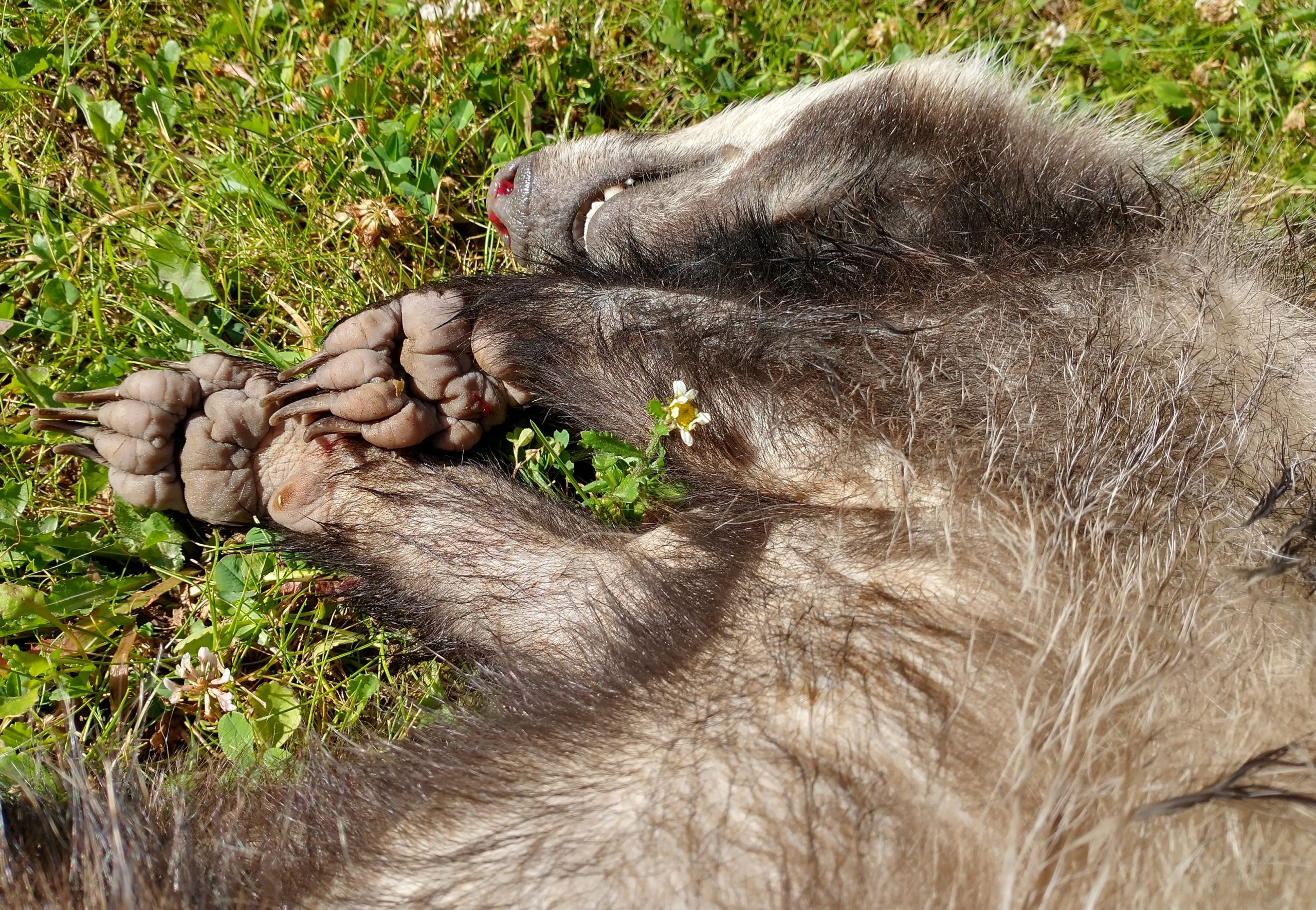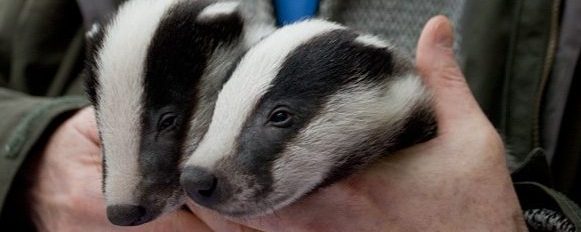
A quick reminder of why the RBCT is so important
The Government’s English badger cull policy since 2013 has rested all but entirely on the RBCT analyses. It is the science that DEFRA has used to create policy and in court to defend their decisions to experiment with badger culling. The original RBCT conclusions claimed badger culling can reduce bovine TB cattle herd breakdowns; dozens of subsequent studies on which the policy hangs, are heavily derived from and dependent on it.
The ‘Godfray panel’ review of the science (published earlier 4th Sept. 2025) produce their own new re-analysis of the RBCT which claims to show a benefit from culling badgers, but at a much lower level of significance than previously presented – it is weak not strong. The panel then follows Defra’s shift from 2023, that the RBCT is no longer pivotal to the policy that badger interventions are necessary in the control of bovine TB. It claims that it is ‘likely’ that other science shows that badgers are a sufficient disease risk to cattle to warrant intervention. More on this below.
Government scientists continue to infer that badger culling has caused a reduction in disease since 2013 when the badger cull policy was implemented, and in no small part because this is what was “predicted” by the results of the RBCT. This is classic confirmation bias. So the correct interpretation of the results of the RBCT analysis remain hugely important to understanding the role of badger culling, or lack of it, in the control of bovine TB. Defra and now Godfray’s attempt to unlink it are strange, suspicious and somewhat unconvincing.
Below is a chronology of some key RBCT publications.
16th February 2006, “Positive and negative effects of widespread badger culling on tuberculosis in cattle” was published in Nature by Donnelly et al.
10th May 2019, “Badger Culling and Bovine TB in Cattle: A Re Evaluation of Proactive Culling Benefit in the Randomized Badger Culling Trial” was published in the Journal of Dairy and Veterinary Sciences by Tom Langton.
13th December 2022, First version of “Absence of effects of widespread badger culling on tuberculosis in cattle” was posted as a preprint on Research Square by Torgerson et al..
15th July 2024. “Absence of effects of widespread badger culling on tuberculosis in cattle” was published in Nature Scientific Reports by Torgerson et al.
21st August 2024. “An extensive re-evaluation of evidence and analyses of the Randomised Badger Culling Trial (RBCT) I: Within proactive culling areas” and “An extensive re-evaluation of evidence and analyses of the Randomised Badger Culling Trial II: In neighbouring areas” were published in Royal Society Open Science by Mills et al..
16th September 2024. A ‘Comment’ response to the new Mills et al. 2024 papers was submitted to the Royal Society Open Science: “Randomised Badger Culling Trial lacks evidence for proactive badger culling effect on tuberculosis in cattle: comment on Mills et al. 2024, Parts I & II” by Torgerson et al.. This was pre-printed with bioRxiv on 20th September.
11th June 2025, ‘Comment’ response to the two new Mills et al. (2024) to the Royal Society Open Science was published: Randomised Badger Culling Trial—no effects of widespread badger culling on tuberculosis in cattle: comment on Mills, Woodroffe and Donnelly (2024a, 2024b), by Paul Torgerson et al. (2025), was published by the Royal Society Open Science.
4th September 2025, Bovine TB strategy review update, Professor Sir Charles Godfray CBE FRS (Chair),Professor Glyn Hewinson CBE FLSW, Professor Sir Bernard Silverman FRS, Professor Michael Winter OBE, Professor James Wood OBE. This review contains a new RBCT analysis by Bernard Silverman.
15th September 2025. “The Randomised Badger Culling Trial (1998-2005); proactive badger culling analyses were not weak, but invalid.” New pre-print by Professor Paul Torgerson. Version 2 posted 29th October 2025.
Natural England’s selective use of published and pre-printed work
Natural England’s rationale for licensing the supplementary badger culls in 2025 did not take the Torgerson et al 2024 preprint into consideration. This is despite considering un-peer reviewed reports, and preprints (notably Mills et al 2024) last year.
Their rationale for licensing the intensive culls in 2025 took into account a draft of the new Godfray review analysis, immediately favouring it over Torgerson et al 2024 and Torgerson et al 2025, (see more here). Notably they also took into account the new APHA (Robertson) pre-print which attempts to claim that Langton et al 2022 is ‘unlikely’ to have found an effect of culling, should one have existed.
Basic flaws and statistical problems with the new Godfray review
Complex statistics is difficult for the non-specialist to understand, and difficult to explain to other non-specialists. But it is important to convey the extent and gravity of the problems with this new Godfray/Silverman analysis. Here goes…….
- Silverman has coded 4 binomial regression logit link models of the RBCT data.
- He says that he has compared the results of the 4 models using AICc information criteria.
- However, the output figures reported were for Bayesian Information Criteria (BIC), not AICc as they were labelled. This was corrected with an erratum on 16th September, with a claim that “the rest of the analysis and interpretation is unaffected”. This is not the case.
- When the correct AICc figures are used, the values for models 3 & 4 (with & without badger culling) are all but the same – there is no real difference.
- Further, as the Godfray group used a quasibinomial model for inference, it would be best practice to use QAICc selection criteria. Using this method, it is the model that does not include culling that has the best co-variate. I.e. culling has no effect.
In addition to the problems with the AICc/QUAICc model selection criteria, Silverman has not correctly adjusted for time at risk (exposure to disease) in his models. Time at risk varied from 2.72 to 6.73 years between areas studied, so this difference needs to be included in their models. As Silverman has used binomial regression, to do this adjustment correctly, you need to have the complementary log-log function in the link (rather than the standard logit link that he used). When this is done, there is no effect of culling.
Silverman has also not dealt with the over-fitting issues of his models, something that was a feature of the Donnelly et al 2006 model. He has chosen to code the model to predict the time at risk, but the method for this creates a high number of variables relative to the number of data points, resulting in over-fitting of data, poor residuals and poor predictive power. In other words, he is using models that are not the most appropriate for the trial and data. Torgerson et al (2024 and 2025) show that the most appropriate models with the best model rating criteria show no effect of culling.
As Professor Mark Brewer pointed out in his review for the Royal Society of Torgerson et al 2025, ”work should be verifiable.” That is, if there really was a significant effect from badger culling in the data from the RBCT, it should be apparent in far more than one specially selected model and specially selected information criteria; it should be possible to verify it with a range of analyses.
As Professor Brewer also pointed out, “..in such a contentious area as this, it is naïve to imagine that a single analysis by a particular group of scientists should be seen as sufficient.” But that is essentially what has happened again; one group of scientists from Oxford University has been allowed to defend their legacy publications, and exclude scientific views that disagree with their own.
What science is left to support badger culling without the RBCT
Godfray refers to the 2024 Birch et al paper, incorrectly suggesting that it compared culled and unculled areas. In reality it was just a time series of data. The reduction in disease over the period of the cull cannot be attributed to badger culling. All disease measures implemented, including the introduction of extensive testing were analysed together with no control. There was no comparison of culled and unculled areas. In fact, the concurrent increase in SICCT testing and introduction of Gamma testing over the period of culling is greatly understated in Birch. See letter in Vet Record for more on this.
The Godfray report quotes two genomics papers to support the role of badgers in the transmission of bTB to cattle. There have been a number of genomic papers published in recent years on this issue, and they reach a range of conclusions. These papers are not definitive. They rely heavily on selective modelling, and many rely on the RBCT for data or inference. They are not evidence of significant disease risk from badgers, or that badger interventions would significantly reduce any disease risk.
Many other prominent scientific papers which have previously been used as evidence for badger culling have been invalidated by Torgerson et al 2024 and 2025 and now even by by the incorrect Godfray panel’s massive demotion of the statistical effect. Done properly the review should have gone back to its 2018 text and corrected it, to remove findings based on these now invalid studies.
The panel have relied on publications which have used flawed methods of analysis. It is important that these papers are now corrected, retracted or marked with expressions of concern in order that further work and funding is not mis-directed.
Most importantly of all, badger interventions designed at reducing TB in cattle must be stopped immediately. They remain wasteful, inhumane and indefensible.
Discover more from The Badger Crowd - standing up for badgers
Subscribe to get the latest posts sent to your email.

